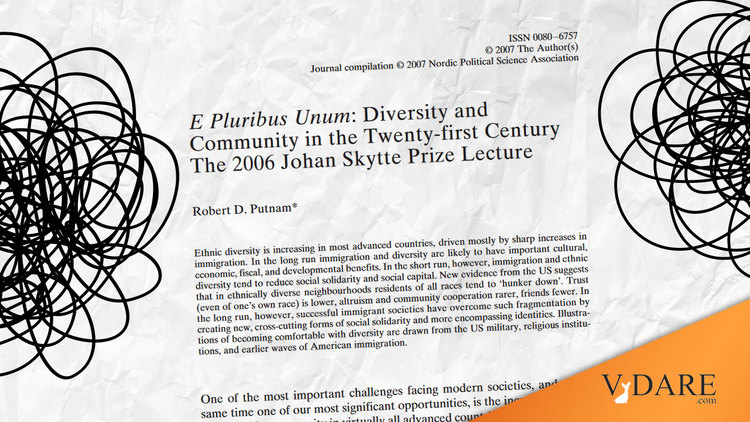
08/26/2022
From SSRN:
Kin-based institutions and economic development
108 Pages Posted:
Duman Bahrami-Rad
Jonathan Beauchamp
Joseph Henrich
Jonathan Schulz
Date Written: August 25, 2022Abstract
Though many theories have been advanced to account for global differences in economic prosperity, little attention has been paid to the oldest and most fundamental of human institutions: kin-based institutions — the set of social norms governing descent, marriage, clan membership, post-marital residence and family organization. Here, focusing on an anthropologically well established dimension of kinship, we establish a robust and economically significant negative association between the tightness and breadth of kin-based institutions — their kinship intensity — and economic development. To measure kinship intensity and economic development, we deploy both quantified ethnographic observations on kinship and genotypic measures (which proxy endogamous marriage patterns) with data on satellite nighttime luminosity and regional GDP. Our results are robust to controlling for a suite of geographic and cultural variables and hold across countries, within countries at both the regional and ethnolinguistic levels, and within countries in a spatial regression discontinuity analysis. Considering potential mechanisms, we discuss evidence consistent with kinship intensity indirectly impacting economic development via its effects on the division of labor, cultural psychology, institutions, and innovation.
I wish abstracts were less abstract and instead gave examples of their topic. I’ve been interested in the effects of cousin marriage and the like on political and economic development for 20 years, but even my eyes glazed over trying to read this abstract. Deep in the paper, Henrich et al. offer as polar opposite examples of kin-intensive and kin-unintensive cultures the herding Marri Baluch of the Pakistan desert vs. the English. Now that’s helpful!
Why not mention these examples in the abstract?
2022-08-26 03:05:39
The Derbyshire rule of burying the juicy bits in the text and leaving the abstract, intro and conclusions as anodyne as possibly. A good example is the Robert Putnam research on diversity, which Derbyshire famously compared to research on green tea in his “We are doomed”:
“[Putnam’s paper “E Pluribus Unum: Diversity and Community in the Twenty-first Century”] has a very curious structure. After a brief (2 pages) introduction, there are three main sections, headed as follows:
• The Prospects and Benefits of Immigration and Ethnic Diversity (three pages)
• Immigration and Diversity Foster Social Isolation (nineteen pages)
• Becoming Comfortable with Diversity (seven pages)I’ve had some mild amusement here at my desk trying to think up imaginary research papers similarly structured. One for publication in a health journal, perhaps, with three sections titled:
• Health benefits of drinking green tea
• Green tea causes intestinal cancer
• Making the switch to green teaSocial science research in our universities cries out for a modern Jonathan Swift to lampoon its absurdities.”
Obviously, Henrich’s work is hot stuff with lots of implications for, say, immigration policy. In effect, his work shows that the English have an economically (and also politically) superior culture when it comes to family structure than do Pakistanis, yet the English keep letting more Pakistanis into England on arranged cousin marriages.
So, yeah, maybe that’s why his abstract is so boring.
This is a content archive of VDARE.com, which Letitia James forced off of the Internet using lawfare.